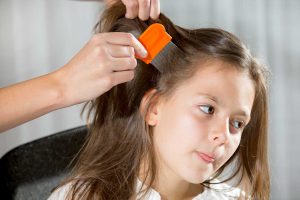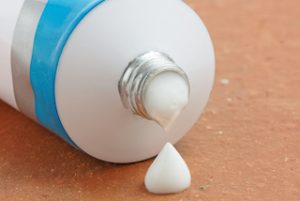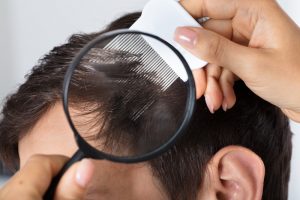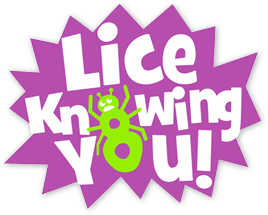The Truth About Lice Treatments

— And Why There’s Only One You Should Trust.
You wouldn’t rush into a medical treatment without evaluating your choices. Why should treating lice be any different? Below, we explain the available lice treatment options – and why there’s only one worth pursuing.

Head lice. You may want to scratch your head at the mere mention. While lice are harmless, the fact that these bugs live in our hair – laying eggs, sucking blood from the scalp – makes them a topic that most people prefer to avoid.
Like lice, our tendency to avoid them is harmless – that is, until we’re dealing with an infestation. When faced with lice for the first time, many people feel so disgusted, so desperate to be lice-free, that they jump at the first remedy they read about.
If this sounds like a problem to you, you’re right. Families who don’t critically evaluate their options often end up spending more time or money (or both) than those who do. They also make themselves vulnerable to the tactics used by lice industry corporations to take advantage of desperate families.
So, what is the best way to deal with lice? Our answer, quite simply, is this: manual removal. Physically removing every louse and nit from the head is the most effective way to get rid of the bugs. In fact, it’s the only way to guarantee your head is lice-free.
At this point, you might be thinking, of course they would say that. Lice Knowing You specializes in manual lice removal. If so, we get it. In fact, we want you to think critically about lice treatment so that you don’t fall victim to over-priced, cure-all methods that are so common on the market. But keep reading, and you’ll understand why manual removal is by far your best bet when it comes to dealing with lice – and why salons like Lice Knowing You are the quickest, most reliable route to lice-free hair.
Below, you’ll find a detailed account of every available lice treatment option – and why, at the end of the day, manual removal wins out.
1. Lice Lore – DIY Home Remedies

First up is what we like to call “lice lore.” This category of lice treatments consists of at-home, DIY approaches using household products, such as mayonnaise, olive oil, or Cetaphil. We’ve even had clients come to our clinic having covered their scalp with Vaseline.
Often, families that develop lice infestations turn to lice lore methods first. With the products already at home, it’s easy to jump right into lice combat mode.
The strategy behind any lice lore method is to kill the bugs by suffocating them. That’s why the substances often recommended are so viscous. In theory, the method sounds pretty logical, and that’s also why so many families try lice lore methods. But in reality, this approach has some major flaws.
For one thing, lice are incredibly robust when it comes to oxygen deprivation. A study conducted in 2018 showed that most lice can survive over 8 hours with little to no air. In fact, it wasn’t until 16 hours had passed that all lice in the study were dead.
So, regardless of the home product you choose, it must stay on the scalp for 16 hours to be fully effective – and this is assuming that the product has completely covered every louse on the head. Then, you have to wash the hair and comb the dead bugs out. Let’s say this takes another two hours. Now, you’re looking at an 18 hour lice treatment. That’s a long time for anybody, but particularly for children, the most common victims of lice.
The other major issue with this approach is the persistence of nits (lice eggs). Even if a single mayo treatment kills all the adult lice, nits will inevitably remain and lead to a fresh infestation between 7 and 10 days later. As a result, families that use DIY methods often end up repeating the process – sometimes multiple times. Since lice eggs frequently survive suffocation, this approach is a case of staying ahead of the bugs, rather than a permanent solution.
It’s true that some families have success with lice lore methods. But the reason they’re successful actually has nothing to do with the suffocation theory. Rather, it’s the process of combing through the hair after the treatment. During this process, parents are not only careful to get all the bugs, most of which they assume to be dead; they are also thorough so as to remove the oily product from their child’s head.
The irony here is that this process is very similar to processes used by manual removal clinics – except clinics don’t soak the hair in Cetaphil for 8 hours. In fact, if you get your family to a lice removal salon, your lice problem can be over in less than an hour, rather than days, or even weeks, on end.
2. Pharmaceutical Lice Treatments

Like “lice lore,” over-the-counter products are appealing because they don’t require an appointment; presumably, OTC products allow you to solve your lice issue right at home. But, before you run to your nearest Bartell’s, consider the drawbacks to this approach.
First, OTC products are no longer very effective. Over the past thirty years, use of OTC products have slowly fostered populations of lice that are resistant to pyrethroids – the active ingredient in most OTC lice products. Widespread infestations of these chemical-resistant bugs, often called “super lice,” mean that traditional over-the-counter products are a lot less effective than they once were. As a result, you might end up buying the same product – or another brand – to try again. Or, you might resort to another method altogether, such as a professional treatment or picking the bugs yourself. Either way, you’ve just sunk deeper into the hole, in terms of time and money, than you needed to.
Our second concern with OTC products is that they are far less effective on lice eggs (also known as nits) than they are on fully grown lice. While a quick treatment with an OTC pesticide may eliminate some of the active bugs on your head, you’re likely to find more active lice just a week or two later.
According to the Mayo Clinic, if you use an over-the-counter product, it’s best to schedule the treatment such that there are no newly laid eggs – which is going to be difficult, unless you keep tabs on each and every louse. Beware however, we are now dealing with what are known as super lice. This means the lice are resistant to most of the pesticide based treatments on the market. The efficacy rate of these products is only around 15%.
Third, OTC products require more work than you’d expect. Nearly all products require that the hair be combed thoroughly after treatment so as to remove every remaining louse. Even products that advertise “no combing” often include a lice comb specifically for this purpose. In fact, the Nix site publicly displays detailed instructions for performing the combing process. But, as lice removal professionals, we can tell you that the combing procedure alone is enough to get rid of lice.
As long as you go to a lice salon where the technicians are experienced and thorough, you can skip the pesticides – and the repeat treatments they might necessitate.
Pharmaceutical treatments also come in the form of prescription medications, but the issues here are even more glaring. The cost of the doctor’s visit makes prescription treatments one of the most expensive options. Even worse, some of the most common lice-killing prescriptions are known to be carcinogenic. Lindane, for example, is identified as a carcinogenic substance by the EPA, and is also known to cause seizures. It is banned by more than 58 countries.
If you want to tackle your lice problem ASAP, you might turn to pharmaceutical products, and you might be successful. But if you want to be absolutely sure that your child is lice free, without repeating treatments or exposing your family to harmful pesticides, manual removal is going to be your best bet.
3. Controlled Heating Devices

So far, we’ve shown how manual removal trumps OTC products and DIY home remedies. But there’s one more approach you’ll want to avoid: controlled heating devices. CHDs are most often used at professional lice clinics, so, from a consumer’s perspective, they might appear legitimate. But in our experiences, your money is far better spent at a clinic that relies exclusively on the expertise and thoroughness of their lice picking technicians.
Controlled heating devices are exactly what they sound like. By blowing hot air out of tiny individual nozzles, CHDs aim to kill lice by dehydrating them. According to CHD proponents, the idea is that lice will perish in a hot, dry environment, since they get their moisture primarily from the atmosphere.
So, what are the drawbacks? The most glaring is the fact that CHDs operate at 138˚ F – AKA, the same temperature as most blowdryers. Furthermore, CHD protocol consists simply of aiming the device close to the scalp, at each point on the scalp, for about 30 minutes total. Yet lice clinics that use CHDs typically cost $100-$150 more than a manual removal clinic. If you’re thinking you could blow-dry your child’s hair at home, you’re right – and you’d end up with very similar results.
As far as result go, CHDs aren’t 100% effective, which is the second reason we recommend avoiding them. In our experience, a significant fraction of lice typically survive a 30 minute treatment by CHD. Even studies that most confidently endorse CHDs don’t put them at a 100% kill rate. Yet, as with pesticides and DIY remedies, any treatment less than 100% effective can put you at risk for a continued infestation and additional treatment costs.
The thing is, most clinics that use CHDs know that they’re not 100% effective. It’s here that we find the biggest problem with CHD clinics. Because they know their touted technology won’t do the trick, CHD clinics must follow hot air treatment with an additional 30 to 60 minutes of combing, to ensure that all lice have been removed from the scalp. The issue? This step is exactly the same work-around as other any lice treatment – whether you’re using an over-the-counter option, products from home, or going to a professional who doesn’t use a CHD. But, with a CHD treatment, you’re paying an additional $100 for cost of the machine – even though the operative step (combing), total treatment time (1 – 1.5 hours), and final outcome (a lice-free head) are the same as simply going to a manual removal clinic.
It’s here where we’d like to touch on the psychology of dealing with a lice infestation. The thought of bugs living on your head can be extremely upsetting. With emotions running high, many people feel that killing head lice is the only way to be “clean” again. It’s as if we equate lice removal with bacterial sterilization – in which killing bacteria is the only way to be free of them, because simply removing them is not possible. But lice are fundamentally different. With a thorough combing technique, you can be lice-free without having to necessarily kill them. In fact, it’s cheaper to do so, by using a thorough lice-combing technique. So, just because a method purports to “kill” the lice on your head, doesn’t mean it’s any cheaper or more effective at solving your lice problem.
That said, if you want to pursue a scorched earth policy, we totally get it. But we bring up this topic because most lice treatments, such as CHDs, take advantage of the emotional nature of lice infestations. They play on our vengeance toward lice, and what happens? We end up spending more for the same outcome.
4. Manual Removal Techniques: Your Best Bet

Manual removal via combing. It’s the common denominator amongst all available lice remedies – and the failsafe they fall back on. All treatments demand that the lice, whether dead or alive, be meticulously removed from the head. That’s why we recommend manual removal as your best treatment option. By cutting out the middleman – whether it’s an OTC shampoo, a medical device, or a head full of Cetaphil – you can save both money and time.
Like other techniques, the most effective combing procedure starts with applying some amount of product. But, unlike other techniques, the product isn’t meant to kill the bugs – it’s simply to immobilize them, loosen the eggs, and make the hair easier to brush. As a result, the product doesn’t breed chemical-resistant lice, and often costs less than OTC products. They’re also much less noxious, and therefore safer for children.
The one drawback to this method is that it requires some skill. Many families try to manually comb out lice at home and ultimately fail. However, families that do so inevitably realize that they have failed much sooner than those who attempt removal with other methods. With OTC products particularly, folks tend to think they’ve found a cure-all – and assume, prematurely, that they are lice-free. Such a mistake can give lice time to breed and further infest the hair.
The other upside is that most professional lice clinics use the combing method. So, if you’ve tried combing and failed, or don’t want to bother trying, you can head to a lice clinic (such as Lice Knowing You). While getting professional help may be more expensive than an OTC product or a DIY method, your chances of being lice-free after one try are much higher. Plus, considering the cost of multiple OTC or DIY treatments, professional removal often ends up being the less expensive option. Just make sure the clinic you go to is one that uses manual techniques, rather than controlled heating devices. CHD clinics will inevitably charge more for the same outcome.
At the end of the day, there isn’t a gizmo, miracle drug, or magical cure to lice. Until there is, people are your best option: thorough, experienced, dedicated people who know how to get rid of lice quickly and effectively.
Luckily, Lice Knowing You is comprised of just those types of people. The sooner you can get to a clinic that knows manual lice removal inside and out, the sooner you’ll be lice free – and safe from the money-sucking, energy-depleting, time-wasting remedies that so many families fall victim to.
